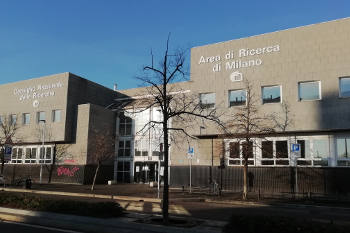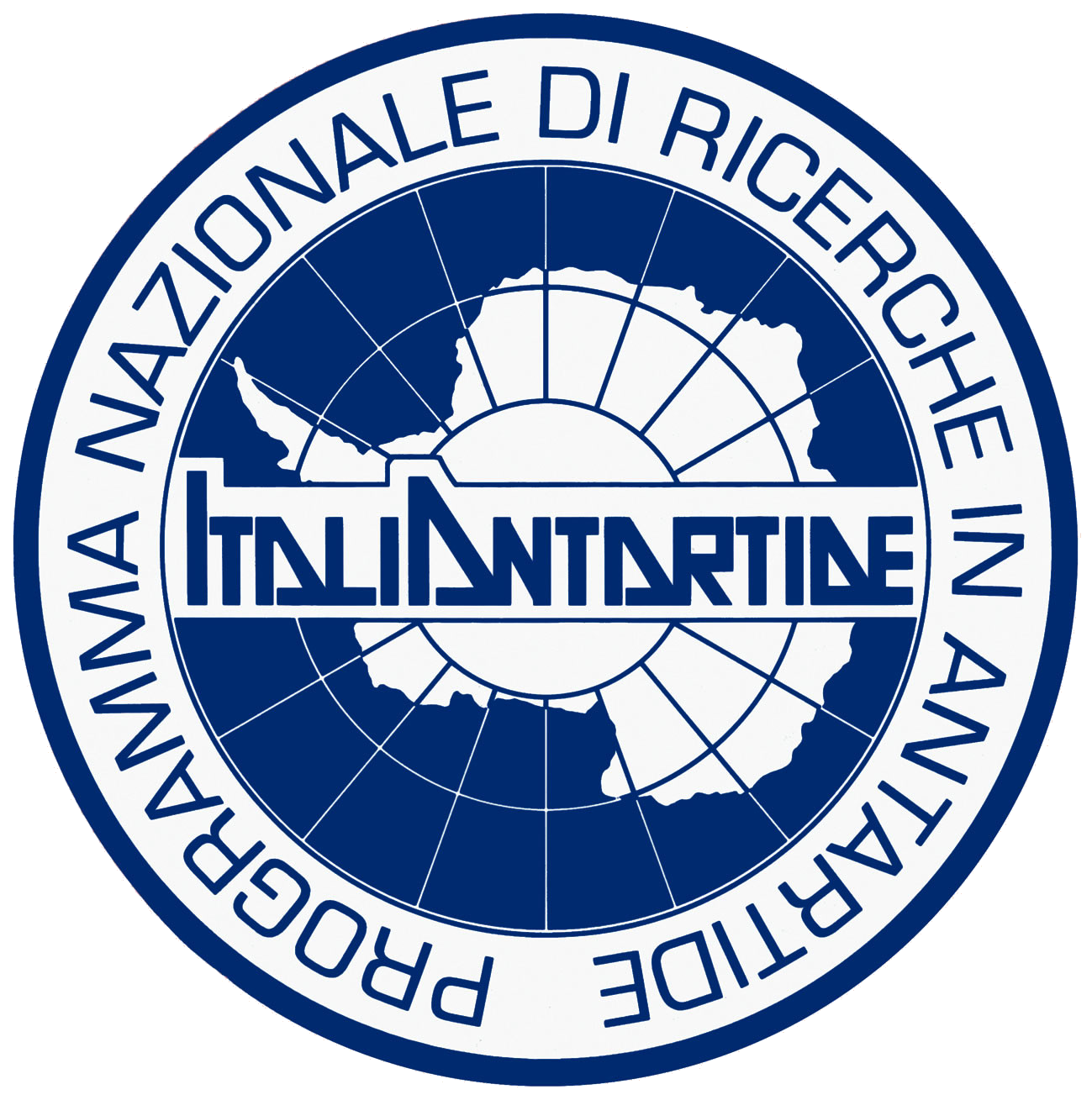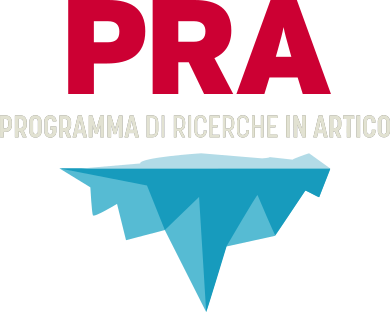English_content
Mario Zucchelli Station (MZS) is located at 74° 41′ S, 164° 6′ E, sitting on a granite promontory in Terra Nova Bay (Ross Sea - Antarctica) at 15 m above sea level.
The station was named in memory of Eng. Mario Zucchelli who coordinated the ENEA Unit for Antarctica (ENEA-UTA) for sixteen years. MZS has been operating since 1985 during the austral summer and supports all the research activities planned by the National Research Program in Antarctica (PNRA).
For more information refer to the www.pnra.aq website.
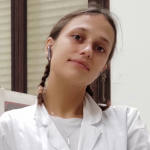 Graduated in Experimental and Applied Biology, Environmental Biology and Biodiversity curriculum at the University of Pavia with the thesis Biodegradation of polyethylene (PET ) and polylactic acid (PLA) using Fusarium sp. and evaluation of enzymatic activity. During the bachelor degree, she carried out a short period of study and research at the Marine Research and High Education (MaRHE) center, on the island of Magoodhoo, in the Maldivian Archipelago, where she focused on marine ecology and safeguard of biological systems, related to the coral reef. During the master degree, she took part in the monitoring of alien species project, in the Marine Protection Area of the Porto Venere Regional Park at ENEA, implementing the previous knowledge and techniques of sampling, treatment, and analysis of marine samples. Thanks to internships in microbiology and mycology, experienced during bachelor and master career respectively, she was able to learn techniques of microbiological analysis associated with recalcitrant materials, deepening associated with plastics. Currently, she caries out research activities for the identification and characterization of antibiotic resistant and virulent environmental vectors in coastal marine areas and deep environments at the Institute of Polar Sciences (CNR-ISP) of Messina.
Graduated in Experimental and Applied Biology, Environmental Biology and Biodiversity curriculum at the University of Pavia with the thesis Biodegradation of polyethylene (PET ) and polylactic acid (PLA) using Fusarium sp. and evaluation of enzymatic activity. During the bachelor degree, she carried out a short period of study and research at the Marine Research and High Education (MaRHE) center, on the island of Magoodhoo, in the Maldivian Archipelago, where she focused on marine ecology and safeguard of biological systems, related to the coral reef. During the master degree, she took part in the monitoring of alien species project, in the Marine Protection Area of the Porto Venere Regional Park at ENEA, implementing the previous knowledge and techniques of sampling, treatment, and analysis of marine samples. Thanks to internships in microbiology and mycology, experienced during bachelor and master career respectively, she was able to learn techniques of microbiological analysis associated with recalcitrant materials, deepening associated with plastics. Currently, she caries out research activities for the identification and characterization of antibiotic resistant and virulent environmental vectors in coastal marine areas and deep environments at the Institute of Polar Sciences (CNR-ISP) of Messina.
 Graduated in Communication Strategies at the University of Padua, during her studies she could experimented different formats of scientific communication, being part of the Planet Book photobook project (Contrasto editor) and participating several times at the public presentations of the book. She wrote as a volunteer for the CICAP online magazine, Query, deepening the theme of the relations between science, pseudoscience and society.
Graduated in Communication Strategies at the University of Padua, during her studies she could experimented different formats of scientific communication, being part of the Planet Book photobook project (Contrasto editor) and participating several times at the public presentations of the book. She wrote as a volunteer for the CICAP online magazine, Query, deepening the theme of the relations between science, pseudoscience and society.
She graduated at the Master’s in Science Communication “Franco Prattico” at SISSA (Scuola Internazionale di Studi Superiori Avanzati) in Trieste. During the Master experience, she had the opportunity to test her skills trying different medium and formats for scientific communication and to learn the theorical basis. During her traineeship, she carried out support activities for the institutional communication of the Institute of Polar Sciences of CNR, managing and creating the contents and the strategy for the social media channels.
Currently, she is handling the presence of the Beyond EPICA – Oldest Ice Core project on social media and she is also involved on outreach and disseminations activities related to the project. She is also taking care of the development of Beyond EPICA communications strategy with partners and the relations with them.
Mass Spectroscopy Laboratory (SpeM)
Brief description
In the SpeM laboratory, at the Venice headquarters, the researchers carry out the chemical (trace elements) and isotopic (δD, δ13C, δ15N, δ18O) characterization of natural matrices and the determination of the total carbon and nitrogen content (in soils and sediments).
Trace elements are all those elements in the periodic table present in natural matrices with concentrations of less than 1 ppm (parts per million). The quantification of these elements allows, in addition to the chemical characterization of the samples examined, an evaluation of any contamination problems, including those arising from human activities. This allows us to study the exchanges that may take place between different compartments of the different ecosystems, and the origin of the elements, as well as allowing us to reconstruct temporal variations related to current and past climate changes.
Per Isotopes are atoms belonging to the same chemical element, therefore with the same atomic number but which differ by mass number (that is, they differ by the number of neutrons contained within the nucleus). Isotopes are therefore chemically equal but different from a physical point of view. They differ in nuclear stability and instability meaning that some can be radioactive. Among the most studied stable isotopes are oxygen, carbon, hydrogen and nitrogen. The study of stable isotope relative abundances between the various isotopes of an element, gives a measure of the ratio of one of the heavier isotopes to the lighter isotope (the most abundant in nature) of a given element. This ratio in nature is not constant but may vary as a result of chemical, physical and biological processes that can lead to an impoverishment or an enrichment of one isotope compared to the other in the various phases of a natural system: we speak of this as isotopic fractionation. Stable isotopes have fundamental applications for environmental and paleoenvironmental studies. For example, the measurement of δ18O in snow/ice cores allows a reconstruction of the temperature trends in the past.
Instrument
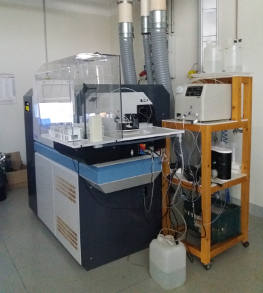
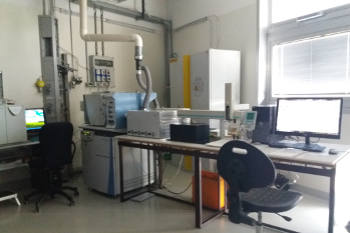
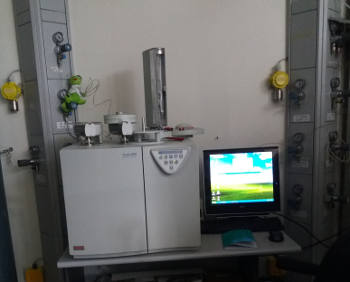
Element XR DeltaV Advantage Elemental Analyzer Flash2000HT
ICP-SFMS Element XR Thermo Scientific equipped with various sample introduction systems (Scott-type spray-chamber in PFA; cyclonic spray-chamber in glass or PFA, cooled by a Peltier system; APEX-ESI system equipped with heated cyclonic spray-chamber (both in glass and in PFA) and a cooling system for the reduction of interferences from oxides and doubly charged ions, resistant to hydrofluoric acid; ARIDUS-CETAC system equipped with heated spray-chamber in PFA and a heated membrane, for the reduction of oxides and doubly charged ions). The instrument is also equipped with an auto-sampler protected by a laminar flow hood that keeps the samples clean during the analysis sessions.
Contact person: Dr. Giulio Cozzi - giulio.cozzi AT cnr.it - CNR-ISP Venice headquarters
IRMS DeltaV Advantage Thermo Scientificequipped with: Gas-Bench (with autosampler), Elemental Analyzer Flash HT with double furnace, two autosamplers for solid samples and one autosampler for liquid samples and ConFloIV, and Gas chromatograph (GC Trace with auto-sampler).
Contact person: Dr. Clara Turetta - clara.turetta AT cnr.it - CNR-ISP Venice headquarters
EA Elemental Analyzer Flash2000HT Thermo Scientific with double furnace, two autosamplers for solid samples and one autosampler for liquid samples.
Contact person: Dr. Clara Turetta - clara.turetta AT cnr.it - CNR-ISP Venice headquarters
Matrix and type of measurement
ICP-SFMS: snow/ice, sea water, surface and groundwater, interstitial water. Determination of trace elements (at ppb to ppq level).
IRMS - Gas-Bench: water (snow/ice, sea water, surface and groundwater, interstitial water), carbonates (foraminifera, carbonates s.s.). δD, δ13C, δ18O measurements,
IRMS - EA: soils, sediments, biota. δ13C, δ15N measurements.
EA: soils, sediments, biota. Determination of total nitrogen (TN), total carbon (TC) and organic carbon (OC).
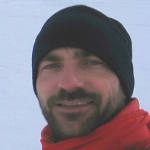 He mainly deals with two research topics: the physical and optical characterization of atmospheric particulate matter, also known as aerosol, and the estimate of the energy balance at the surface. As for the first topic, he uses techniques such as solar and lunar photometry for the estimation of the optical thickness of the aerosols in the atmosphere, the in-situ measurement of the scattering and absorption coefficients and the size distribution, through online optical. This last type of measurement is also carried out on profiles obtained by means of a tethered balloon. As for the energy balance, he uses an integrated approach between measurements and calculation codes for the radiative part, while the heat and mass balances are estimated by direct eddy covariance measurements. These activities take place mainly at the CNR infrastructures in Ny-Ålesund (Svalbard) and at the Korean base Jang Bogo in Antarctica, a country in which a close collaboration has been active for years.
He mainly deals with two research topics: the physical and optical characterization of atmospheric particulate matter, also known as aerosol, and the estimate of the energy balance at the surface. As for the first topic, he uses techniques such as solar and lunar photometry for the estimation of the optical thickness of the aerosols in the atmosphere, the in-situ measurement of the scattering and absorption coefficients and the size distribution, through online optical. This last type of measurement is also carried out on profiles obtained by means of a tethered balloon. As for the energy balance, he uses an integrated approach between measurements and calculation codes for the radiative part, while the heat and mass balances are estimated by direct eddy covariance measurements. These activities take place mainly at the CNR infrastructures in Ny-Ålesund (Svalbard) and at the Korean base Jang Bogo in Antarctica, a country in which a close collaboration has been active for years.
He is author of about 100 publications including journal articles and contributions in scientific books.
Scopus - Author ID: 24367405100
![]() http://orcid.org/0000-0002-8394-2292
Google Scholar
http://orcid.org/0000-0002-8394-2292
Google Scholar
 Graduated in Environmental Science and Technology from the University of Bicocca in 2023. The thesis focused on characterizing the carbonaceous and mineral content of Light Absorbing Particles deposited on the snow surface of the Shallap Glacier (Peru), including a modeling study based on back-trajectory analysis. Currently a Ph.D. student in Polar Sciences at Ca' Foscari University since December 2023, in collaboration with the Institute of Polar Sciences in Milan and Venice. The research aims to study the impact of biomass burning emissions and dust uplift on the Arctic atmosphere by analyzing the composition and the optical and microphysical properties of aerosols, integrating this information with the study of their source areas.
Graduated in Environmental Science and Technology from the University of Bicocca in 2023. The thesis focused on characterizing the carbonaceous and mineral content of Light Absorbing Particles deposited on the snow surface of the Shallap Glacier (Peru), including a modeling study based on back-trajectory analysis. Currently a Ph.D. student in Polar Sciences at Ca' Foscari University since December 2023, in collaboration with the Institute of Polar Sciences in Milan and Venice. The research aims to study the impact of biomass burning emissions and dust uplift on the Arctic atmosphere by analyzing the composition and the optical and microphysical properties of aerosols, integrating this information with the study of their source areas.
Where we are
The building, in pure Art Nouveau style, is located on the Straits of Messina, in the shadow of the Montorsoli Lantern. Thanks to this position, it dominates the waters of the Straits and the Port. The building consists of a central body with three floors, which houses offices and studios, and two wings, with the laboratories. The ISP building in Messina is shared with the Institute for Biological Resources and Marine Biotechnologies (CNR-IRBIM) and there is also a park of about 10,000 square meters, where there is the main auditorium in a building that was originally the Royal National Shooting range.
How to find us
- By train: if you come from the peninsula, get off at the Villa San Giovanni rail station, then board the BlueJet fast ship heading towards Messina Porto Storico. Otherwise if you come from a Sicilian town, get off at Messina Centrale rail station. Once you arrive in Messina, call our office to arrange transfer by car to the Institute.
- By plane: Catania Fontanarossa is the closest airport. From the airport, take the SAIS-Autolinee bus to Messina Central Station. Once you arrive in Messina, call our office to arrange the transfer by car to the Institute.
- By car: the institute can be reached by car and there is on-site temporary parking available. If you come from the peninsula, once you reach Villa San Giovanni you can board the Caronte ship (runs every 40 minutes) and then, once in Messina, continue by car to the Institute. If, on the other hand, you come from a Sicilian town, take the A18 Messina-Catania, exit at Messina Centro and continue towards the institute following the directions here.
Contact
 ISP Secondary office of Messina
ISP Secondary office of Messina
Responsable
Dr. Maurizio Azzaro
E-mail: responsabile_me AT cnr.it
Spianata S. Raineri 86 - 98122 Messina (ME)
Phone:+39 090 601 5415
Fax: +39 090 669 007
MAP
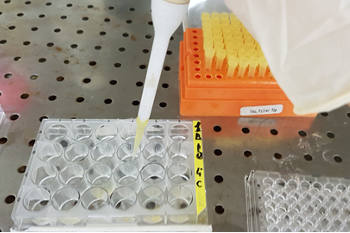 Short description
Short description
The research activities carried out in the BiogeM laboratory at the Messina headquarters are aimed at studying the marine and terrestrial biological processes that modulate and influence the chemical characteristics of the polar environment and the related cycles of matter and energy, also in relation to climate change.
Particular attention is paid to the evaluation of the role of microorganisms in the global carbon cycle and in the biogeochemical cycles of nutrients (nitrogen, phosphorus) of marine and lacustrine environments, through the study of both productive and degradative processes.
Among these, the activities involved in the decomposition of organic polymers, through microbial enzymatic activities, and the mineralization processes through microbial respiration.
The biogeochemical processes mediated by the microbial component are also being studied in the framework of the cryosphere, in order to understand the ecological significance of microbes in the permafrost, and their ability to maintain an active metabolism in extreme living conditions.
Together with the microbial processes linked to the biological pump and organic matter decomposition, a series of indirect biogeochemical parameters related to phytoplankton and bacterial biomass (Chlorophyll, ATP, lipopolysaccharides-LPS) are also determined.
Matrices of interest
The analyzed matrices are mostly ascribable to the hydrosphere (marine, river and lake waters, brines), soil, sediments, biofilm, cryosphere (permafrost, snow, sea and continental ice, intrapermafrost brines) and aquatic organisms.
Study techniques
At the BiogeM laboratory, measurements are carried out to determine the following parameters:
- Primary phytoplankton production;
- Microbial respiratory activity (consumed O2; produced CO2) (by ETS assay);
- Microbial enzymatic activities (leucin aminopeptidase, beta-glucosidase and alkaline phosphatase) (through fluorogenic substrates);
- Heterotrophic bacterial production;
- Content of total and size-fractionated (pico-, nano- and micro-phytoplanktonic) chlorophyll-a, pheopigments;
- microbial ATP in pico-, nano and microplankton fractions;
- Quantitative analysis of lipopolysaccharides (LPS) by the LAL chromogenic test.
Instrumentation
Spectrofluorimeter, Luminometer, Fluorometer, Spectrophotometer equipped with 96-well plate fluorescence reader, incubator, autoclave, balance, homogenizer, filtration systems, refrigerated centrifuge.
For information: Dr. Gabriella Caruso – gabriella.caruso AT cnr.it
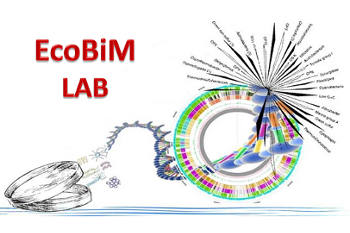 Brief description
Brief description
Experimental activities carried out at the EcoBiM LAB in Messina are addressed to the ecology and biotechnology of microorganisms, particularly prokaryotes, inhabiting both marine and continental polar habitats. The diversity of microorganisms, their response to environmental stress conditions (deriving from natural or anthropogenic forcing, such as climate change and chemical contamination), the astrobiological implications of life in extreme environments, and their evolution and adaptation in polar environments are among the ecological aspects investigated. EcoBiM researchers are also interested in the evaluation of the metabolic capabilities and biotechnological potentialities of cold-adapted microorganisms, by searching for biomolecules exploitable in industrial applications and bacteria able to degrade organic pollutants at low temperatures.
Matrices of interest
The analyzed matrices are mostly attributable to the hydrosphere (marine, river and lake waters, brines) and cryosphere (permafrost, snow, sea-ice and continental ice, intrapermafrost brines), but soils and sediments are also considered. The study of the interactions between microorganisms and biotic (for example, pelagic and benthic organisms) and abiotic (such as microbial communities colonizing polymeric materials, indicated with the term plastisphere) is of particular interest.
Applied experimental approaches
For the microbiological characterization of extreme environments, similarly to the analytical procedures commonly applied for the study of temperate areas, we use both culture-dependent and -independent (i.e. biomolecular and biochemical) approaches, including:
- isolation and maintenance in pure culture of bacterial strains;
- phenotypic (physiological, biochemical and morphological characteristics) and genotypic (analysis of the 16S rRNA sequences and search for functional genes) characterization of cultivable bacteria;
- screening of bacteria for the production for useful biomolecules (including antibiotics, exopolysaccharides, biosurfactants);
- evaluation of the metabolic capacities of the microbial communities through miniaturized assays;
- characterization of the microbial communities by the hybridization in situ with oligonucleotide probes (CARD-FISH);
- extraction of environmental DNA and RNA for metagenomics and metatrascriptomics studies;
- preparation of microcosms enriched with organic and inorganic contaminants, and degradation tests.
Instrumentation
The EcoBiM LAB is equipped with basic instrumentation for environmental and applied microbiology (laminar flow cabinet, autoclave, incubators and thermostated baths, centrifuges, filtration systems, sonicators, spectrophotometers, fluorometers) and molecular biology equipment (thermocycler and equipment for electrophoresis).
For details: Dr. Angelina Lo Giudice - angelina.logiudice AT cnr.it
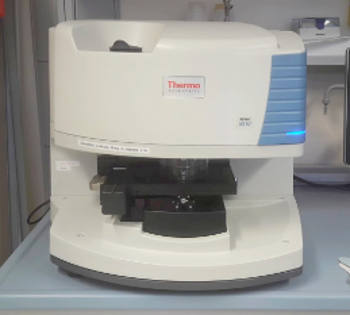
Brief description
Microplastics are considered emerging pollutants and they are present in different environmental compartments (e.g. seawater, soil, atmosphere, etc.). In 2019 the European Chemical Agency has clearly defined microplastics and their sizes: “a material composed of solid polymer-containing particles, to which additives or other substances may have been added, with particle dimensions ranging from 1 nm to 5 mm and with fiber lengths ranging from 3 nm to 15 mm and length to diameter ratio of >3. ECHA has also firmly stated the need of polymer identification when analyzing microplastics. Microplastics can be primary and secondary, according to their sources; sources of primary microplastics are discharges from household washing machines, road dust, tire wear and cosmetics. Particles and fibers of plastics can be vector of other pollutants and pathogens. An accurate quantification and characterization of microplastics allow evaluating the environmental risk assessment and designing future actions of environmental management and recovery.
Instrument
Micro-FTIR Nicolet™ iN™10 Infrared Microscope Thermo Scientific, it couples optic microscopy with IR spectroscopy. Two different detectors are present: DTG (Deuturate Triglycine sulfate) detector enables room temperature analysis, and MCT (Mercury Cadmium Telluride ) detector works with liquid nitrogen and allows the analysis of samples down to 10 µm. Samples can be analyzed on transmittance mode, reflectance mode and ATR mode.
Matrix and type of measurement
Non-destructive analysis of microplastics in different environmental samples (seawater, sediments, soil, permafrost, aerosol, snow, raw and treated water, discharges from household washing machines, etc.) and in different biota (crustaceans, mollusks, fish, etc.). Micro-FTIR allows quantification and simultaneous polymer identification of plastic particles and fibers and of additives, plasticizers. and other synthetic and natural fibers. It can be employed for analysis of microplastics, but also for analysis of microfossils, artistic handiworks, etc.
Contact person: Dr. Fabiana Corami - fabiana.corami AT cnr.it - CNR-ISP Venice headquarters
More...
Where we are
The secondary office of Institute of Polar Sciences of Milan is located at the CNR Area della Ricerca 3 Milano-Bicocca, Via Cozzi 53 - 20126 Milano. Map
How to find us
- by train: Greco-Pirelli Station
- by car: From the Turin-Venice highway (A4), take the "Milano - viale Zara" exit, head towards the center of Milan, then go to viale Sarca, the first street parallel to the one you are traveling on the left side. Continuing along Viale Sarca in the same direction of travel you will meet the University of Milano-Bicocca on your left, after about a kilometer.
- by plane: Linate Airport, take the bus n. 73 (direction S. Babila M1) and get off at Precotto. Then take the tram n.7 and get off at Greco Pirelli. Malpensa Airport: take the Malpensa Express train. From Cadorna station take the M1 line (direction: Sesto 1° Maggio). Then take the tram n. 7 and get off at Greco Pirelli. Orio al Serio airport: take the bus toward Stazione Centrale, then take the bus n. 87.
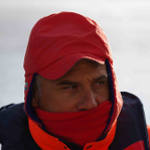 Degree in Geological Sciences in 1987 in Bologna. Researcher at the CNR Institute of Marine Sciences from 1994 to 2019, he has been involved in biogeochemical and sedimentological research in the marine and coastal environment.
Degree in Geological Sciences in 1987 in Bologna. Researcher at the CNR Institute of Marine Sciences from 1994 to 2019, he has been involved in biogeochemical and sedimentological research in the marine and coastal environment.
Sedimentology, biogeochemistry and dynamics of marine sediments and particles. Main focus on flux and mass balance calculations for carbon, as well as biogenic and terrigenous constituents to understand origins, transport pathways and fates of particles on continental margins. Study of organic matter in the sediment and of nutrient fluxes at the water-sediment interface. His research interests currently are: (a) vertical fluxes of particles and lateral transportation of materials from the continental shelf to deep basins in Arctic and Mediterranean Sea; (b) Non-destructive core logging/scanning methods including XRF Core Scanning.
Participation at EC and Arctic projects (Snow, Arca, Defrost). PI or WP leader of projects funded by ONR and national projects. Participation in more than 75 oceanographic cruises between 1990 and 2019 (on which 20 as Chief Scientist) for a total of 525 days of shipboard experience.
Author and co-author on over 158 publications (+ 120 abstracts) included data and technical reports, of which 62 publications on Scopus, 1513 citations, H index = 23.
Scopus - Author ID: 6602827994 Google Scholar
The mission of the ISP is to contribute to increasing the quality of Italian scientific and technological research in the polar regions, and to provide knowledge on global changes in support of Italian and European environmental policies by the development of new technologies and survey methodologies.
The Institute aims to be a reference point for:
- CNR polar research; as ISP has extensive links to universities as well as national and international public and private bodies. ISP offers multidisciplinary skills and technologies that are essential to studying and protecting the environment;
- scientific personnel, able to make qualified contributions to the National Antarctic Research Programme (PNRA), the Arctic Research Programme (PRA) and European Commission projects through the development of research and monitoring activities;
- interdisciplinary polar cooperation and research, including the development of meetings, publications, research opportunities and complementary activities, and interacting with society;
- the standardisation of measurements and preparation methods to improve the quality of results, and the development of coordinated measures aimed at common research plans and/or general common objectives;
- the training of the next generation of polar scientists.
Fulfilling our mission will allow us to improve our understanding of the climatic changes taking place in the Arctic and Antarctic environments and possible future developments at both polar and global levels. Our studies address research issues related to both the chemical/geochemical and physical aspects of the poles using a multidisciplinary approach to protect these vulnerable extreme environments. The repercussions of climate change on these dynamics are still largely unknown and will require integrated research using long term multidisciplinary methods to understand them fully.
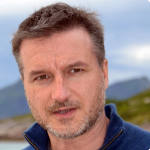 Director of Research at CNR-ISP.
Director of Research at CNR-ISP.
Laurea (M. Sc. equiv.) in Geology (1999), University of Padova. PhD (European Doctorate Label) in Earth Sciences (2005), University of Padova, in collaboration with the Australian National University.
His research mainly focuses on the development and application of geochemical proxies for paleoclimate reconstructions on a variety of timescale and aims to address some of the fundamental aspects of the biomineralization mechanisms in calcifying organisms (corals, molluscs, calcareous algae). This includes the analysis of minor and trace elements, as well as stable (11B/10B) and radiogenic (143Nd/144Nd, 87Sr/86Sr, 230Th/U) isotopes in biogenic carbonates.
He has acquired significant expertise in the geochemistry of biogenic carbonates, physical and chemical oceanography and deep-sea habitat mapping while working for extended periods at world leading institutions for geochemistry and paleoclimate related studies (Australian Institute of Marine Sciences, Australian National University, Lamont-Doherty Earth Observatory, Laboratoire des Sciences du Climat et de l'Environnement, Université Paris-Saclay and University of Western Australia). He has participated to 20 oceanographic cruises in the Mediterranean Sea, Atlantic, Indian Ocean, and the Ross Sea off Antarctica (some of them as chief or co-chief scientist), and several SCUBA diving expeditions in the Caribbean Sea, Red Sea, Indian and Pacific Ocean.
He has authored more than 90 peer-reviewed scientific papers, 4 book chapters, more than 120 abstracts and 20 invited talks, and he has served as a proposal reviewer for ERC Advanced Grant, NSF-USA, ANR-France, CNRS/INSU-France, NSERC-Canada, FONDECYT-Chile, DFG-Germany, ISF-Israel, Czech Science Foundation, EUROFLEET Plus, Swiss National Science Foundation Eccellenza Professional Fellowship, SCOR WG and Italian Programme for recruitment of young researcher as well as for 25 peer-reviewed scientific journals.
![]() http://orcid.org/0000-0001-5598-2214 Google Scholar
http://orcid.org/0000-0001-5598-2214 Google Scholar
 Ministero dell'Universita e Ricerca
Ministero dell'Universita e Ricerca
Programma Ricerche Artico
Programma Nazionale di Ricerca in Antartide
 Ministero degli Affari Esteri e della Cooperazione Internazionale
Ministero degli Affari Esteri e della Cooperazione Internazionale
L'Italia e l’Artico
L’Italia e l’Antartide
CNR-ISP
National Research Council
Institute of Polar Sciences
c/o Scientific Campus - Ca' Foscari University Venice - Via Torino, 155 - 30172 VENEZIA MESTRE (VE)
Phone: +39 041 2348547 - E-mail: protocollo.isp AT pec.cnr.it
Fax: +39 041 2348 549 - Codice Fiscale: 80054330586 - P.I.:02118311006
Unless otherwise indicated, the content of this site is licensed : Attribution Non Commercial Share Alike 4.0 International (CC BY-NC-SA 4.0)
Privacy policy e Cookie policy - Transparent administration (CNR)







